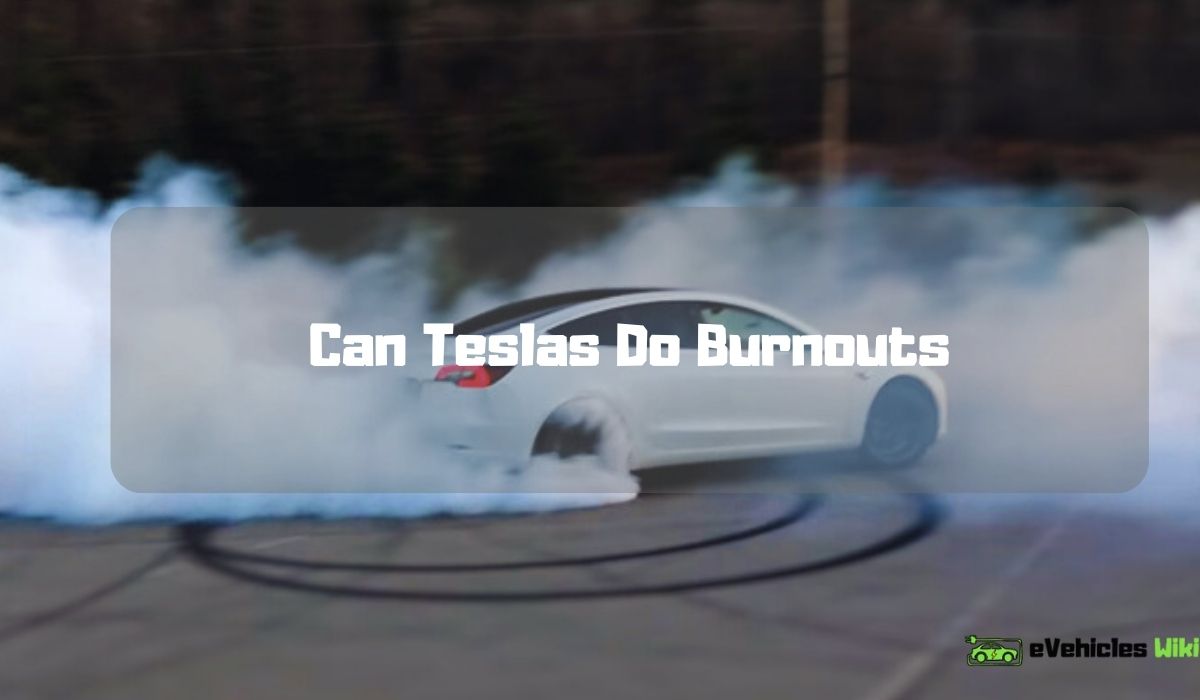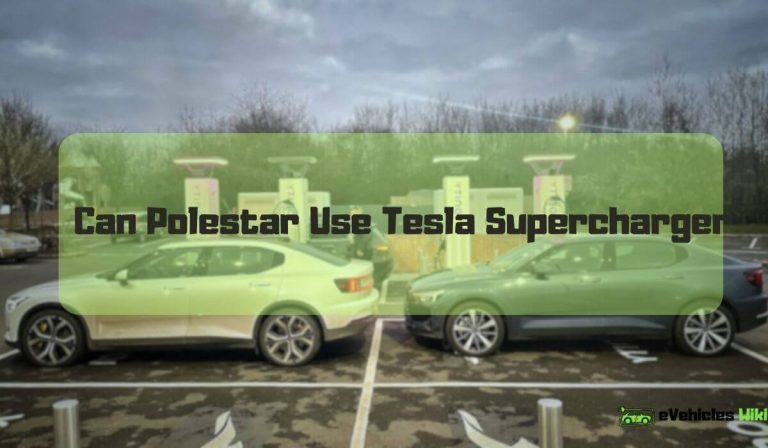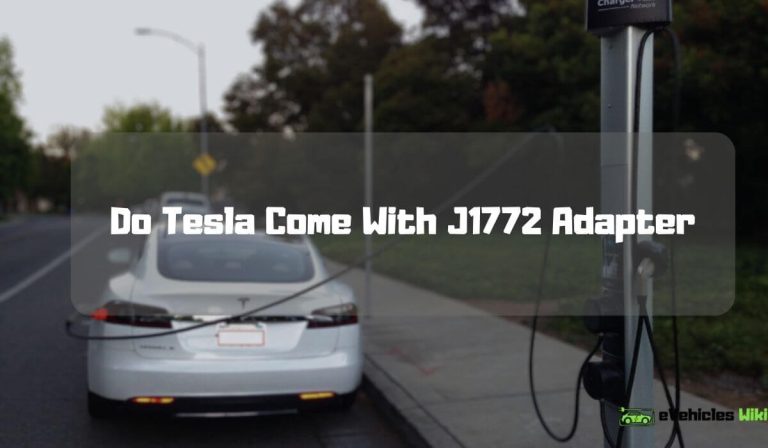Can Teslas Do Burnouts
Yes, teslas can perform burnouts. Tesla’s all-wheel-drive system allows the car to have impressive acceleration and torque, which can make performing a burnout a possibility.
Tesla vehicles are known for their innovative technology, impressive acceleration, and sleek design. Many car enthusiasts wonder whether these electric vehicles are capable of performing burnouts. With the car’s all-wheel-drive system, teslas have a lot of torque and instant acceleration, which makes it possible to perform a burnout.
However, the process of performing a burnout in a tesla is different than that of a traditional combustion engine car. In this article, we’ll explore the steps required to perform a burnout in a tesla, the effects it can have on the car, and the precautions drivers should take to ensure they’re doing it safely.
Understanding Burnouts
Can Teslas Do Burnouts?
Electric cars have been gaining popularity over the years, and one of the most striking is tesla. Teslas are known for their high-performance capabilities, but can they perform burnouts? Burnouts have always been associated with gasoline cars, but introducing electric cars like teslas creates a new challenge.
We’ll look closely at burnouts, how they work in gasoline vehicles, and how teslas stand a chance in burnout competitions.
Definition Of Burnouts And How They Are Traditionally Done In Gasoline Vehicles
Burnouts occur when the wheels of a car spin while the car remains stationary. The trick is to maintain wheel spin while the car isn’t moving, creating a dramatic and smoke-filled effect. To achieve this effect in gasoline cars, the driver must press down on the accelerator while simultaneously holding the brake pedal.
This action causes the tires to spin and heat up, causing smoke. Burnouts are a popular way to show off a car’s horsepower, and they’re often present in car shows and competitions.
Mechanics Of Performing Burnouts: Torque, Horsepower, Traction, And Tire Friction
To perform a proper burnout, several factors come into play, which include torque, horsepower, traction, and tire friction. Torque, also known as the twisting force of an object, plays a crucial role in burnouts. The higher the torque, the easier it is to spin the wheels.
Horsepower refers to the power output or the rate at which work is being done. The greater the horsepower, the more likely the car can perform a burnout. Traction, on the other hand, refers to the grip between the tires and the road surface.
The more traction, the harder it is to perform a burnout. Finally, tire friction plays a vital role in burnouts. Tires with higher friction become warmer and grip less, making them more prone to losing traction, allowing the wheels to spin.
Brief Comparison Of Traditional Burnouts Vs. Electric Burnouts
While traditional burnouts rely on the internal combustion engine to ignite gasoline and create the power necessary to spin the wheels, electric car burnouts must work differently. Teslas achieve maximum torque from the moment the wheels start turning because electric motors have instant power delivery, making burnouts more sustainable.
However, the primary difference is the lack of gear changes, allowing electric cars to achieve constant acceleration. This gives teslas an advantage in drag races as they can maintain their top speed all the way.
Teslas can perform burnouts, and they’re pretty impressive in doing so because of their unique power delivery system. While traditional gasoline cars will always remain iconic for burnouts, teslas have paved the way for tech-savvy car enthusiasts to show off their style and expertise.
The future looks electric, and we will undoubtedly see more exciting ways to showcase car performance.
Can Teslas Do Burnouts?
If you’ve ever been curious about if teslas can do burnouts, then this post is for you! The topic has generated lots of debate, misconceptions, and myths. Let’s explore the controversy surrounding the topic.
Exploring The Controversy Surrounding The Topic
- Electric cars are known for their power, speed, and acceleration. However, the question remains whether teslas can burnout.
- Skeptics argue that electric cars, including teslas, lack the mechanics to perform tire-smoking burnouts that gasoline-powered engines can.
- Others argue that it’s not a question of whether teslas can burnout, but rather about how to do it without damaging the car’s battery system and electronics.
Addressing Common Misconceptions And Debunking Myths
- Myth: Teslas can’t do burnouts because they lack a transmission.
- Fact: Teslas have a single-speed reduction gearbox connected directly to the motor, which delivers instant torque to the wheels.
- Myth: Performing burnouts in a tesla damages the battery and electronic components.
- Fact: Tesla’s unique cooling system and power management software protect the battery and electronics from damage when performing extreme driving maneuvers.
Advantages And Disadvantages Of Performing Burnouts In A Tesla
- Advantages:
- Impress your friends with quick acceleration and tire-smoking burnouts.
- Teslas have instant torque, making it easier to perform burnouts than in gasoline-powered engines.
- Electric motors don’t stall when overheated, unlike gasoline engines.
- Disadvantages:
- Burnouts significantly reduce the life of the tires.
- Burnouts put huge stress on the vehicle’s drivetrain, and it’s unclear if the tesla warranty would cover any resulting damage.
Use Cases Where A Tesla Burnout Might Be Necessary
- Drag racing events where the goal is to attain maximum acceleration and speed.
- Demonstrations by tesla sales representatives to show the car’s capabilities to potential buyers.
- Fun, casual burnouts on a closed-off private track or with appropriate safety equipment and adult supervision.
While teslas can perform burnouts, it’s advisable to take the necessary precautions to avoid damaging the car or causing harm to yourself and others. Consider the advantages and disadvantages before attempting a burnout, and always perform such maneuvers with caution.
Tesla Burnout Challenges
Can Teslas Do Burnouts?
Are you wondering whether a tesla can do burnouts? It’s a common question among car enthusiasts since teslas are electric cars. To answer the question, yes, teslas can do burnouts. However, tesla burnouts come with unique challenges.
The Impact Of Electric Motors On The Burnout Process
The significant difference between traditional combustion engines and electric motors is torque delivery. An electric motor delivers maximum torque instantly. Consequently, achieving a burnout in a tesla is easier compared to a petrol-powered vehicle. Additionally, electric motors produce a distinct sound and smell, which makes a burnout in a tesla quite an experience.
Technical Limitations Of Performing Burnouts In A Tesla
Unlike petrol-powered cars, tesla’s firmware is designed to detect and prevent abuse of the vehicle’s hardware. A tesla has a complex electronic control system that regulates the amount of power sent to the wheels. In addition, the system’s sensors monitor tyre spin levels, which detect when a burnout is being performed.
The firmware’s strict safety protocols make it difficult to repeat burnouts consecutively. After every burnout, the system needs to cool off to avoid overheating, resulting in reduced performance. This limitation is because the systems monitor the battery temperature and regulate the amount of power sent to prevent thermal runaways.
Inherent Safety Concerns And How Tesla Owners Can Mitigate Them
Performing a burnout in a tesla comes with inherent safety concerns. Here are the critical safety concerns that should be addressed.
- Traction control: Tesla’s traction control system helps reduce wheelspin in slippery conditions. Before performing a burnout, it’s essential to disable the system in the “driving” menu.
- Tyre health: Burnouts take a toll on your car’s tyres. Tesla owners should regularly check their car’s tyres for wear and tear.
- Mechanical wear and tear: Regular burnouts can lead to mechanical wear and tear of your car’s parts. It’s recommended to avoid unnecessary strain on the vehicle to increase its longevity.
Tips And Tricks For Getting The Most Out Of A Tesla Burnout
- Turn off the traction control: Disabling the traction control allows for maximum power output, making it easier to perform a burnout.
- Ensure the vehicle is in ludicrous mode: Ludicrous mode unleashes the vehicle’s full potential, making it easier to perform a burnout.
- Use a pre-heating method: In high-performance teslas, pre-heating the tyres is crucial to get the most out of a burnout.
A tesla can perform burnouts. However, with the firmware’s protective measures, tesla burnouts come with unique challenges. Tesla owners should be cautious when performing burnouts and adhere to the recommended guidelines to ensure their safety and the vehicle’s longevity.
The Future Of Burnouts With Teslas
Can Teslas Do Burnouts: The Future Of Burnouts With Teslas
Electric cars are changing the automotive industry for good, and tesla is one of the pioneers of this new era of technological advancement. But, as speed enthusiasts, some of us are wondering whether teslas can perform burnouts, the iconic tire-smoking stunts popularized by muscle cars.
We will discuss the future of burnouts with teslas, the evolution of tesla technology, potential modifications, and final thoughts for tesla owners interested in performing burnouts.
Evolution Of Tesla Technology And Its Potential Impact On Burnouts
Tesla is known for producing some of the fastest and most advanced electric cars on the market. Their technologies have significantly impacted the automobile industry, but when it comes to burnouts, teslas have lagged compared to traditional cars. Here are some key points to consider:
- Teslas use electric motors that provide instant torque and acceleration, making them faster than gas-powered cars.
- Traditional burnouts require a lot of power, torque, and rear-wheel-drive layouts to spin the rear wheels and produce smoke and noise.
- Most teslas are all-wheel drive, making it impossible to perform traditional burnouts.
- Teslas are equipped with an advanced traction control system that prevents wheelspin and increases safety.
Possible Modifications To Increase A Tesla’S Burnout Capabilities
Even though teslas are not designed to perform traditional burnouts, there are various modifications that tesla owners can make to increase their chances of success. Here are some modifications that might help:
- Tesla owners can disable the traction control system through their vehicle’s settings to increase wheelspin.
- Using specialized tires designed for burnouts can help increase the grip and traction needed to produce smoke and noise.
- Modifying the electric powertrain with aftermarket components can increase power and torque, providing more tire-smoking capabilities.
Final Thoughts And Recommendations For Tesla Owners Interested In Performing Burnouts
Performing burnouts is not only illegal in public areas, but it can also damage your tires, suspension, and vehicle’s components. Even if you manage to perform a successful burnout with a tesla, you risk voiding your warranty and facing expensive repair bills.
Here are some final thoughts and recommendations for tesla owners interested in performing burnouts:
- Instead of performing traditional burnouts, try exploring the full potential of your tesla’s acceleration, handling, and driving dynamics.
- If you insist on performing burnouts, do it safely and legally in controlled environments such as racetracks or private properties.
- Always follow tesla’s recommendations and guidelines for modifying or altering your vehicle as any modifications can impact your car’s performance and safety.
While teslas may not be the ideal vehicles for performing burnouts, they offer unique and thrilling driving experiences that showcase the future of automotive technology. However, it’s important to remember that safety, legality, and responsible vehicle ownership should always come first.
Frequently Asked Questions Of Can Teslas Do Burnouts
Can Teslas Perform Burnouts?
Yes, teslas can perform burnouts, but it’s not recommended as it damages the tires and affects the car’s performance.
Is Doing A Burnout In A Tesla Bad?
Yes, doing a burnout in a tesla is bad as it puts unnecessary stress on the electric motors, wasting their energy and potentially damaging their components.
What Happens If You Do A Burnout In A Tesla?
If you do a burnout in a tesla, it can cause damage to the tires, drivetrain, and motor, reducing the car’s overall performance and decreasing its lifespan. It’s not worth it.
Conclusion
As we conclude our discussion on whether teslas can do burnouts, it is evident that the answer is not straightforward. While some tesla models may be able to perform burnouts, it largely depends on the vehicle’s specifications, configuration, and driver skills.
As we have seen, the model s plaid and the roadster are some of the most likely candidates for pulling off high-performance maneuvers, including burnouts. However, it’s essential to note that burnouts are not only illegal but can also cause damage to both the tires and the electric motor.
Therefore, it’s advisable to adhere to safe driving practices and always follow traffic rules. We hope you have found this article informative and helpful in understanding the capabilities of tesla models regarding burnouts. Thank you for reading!







